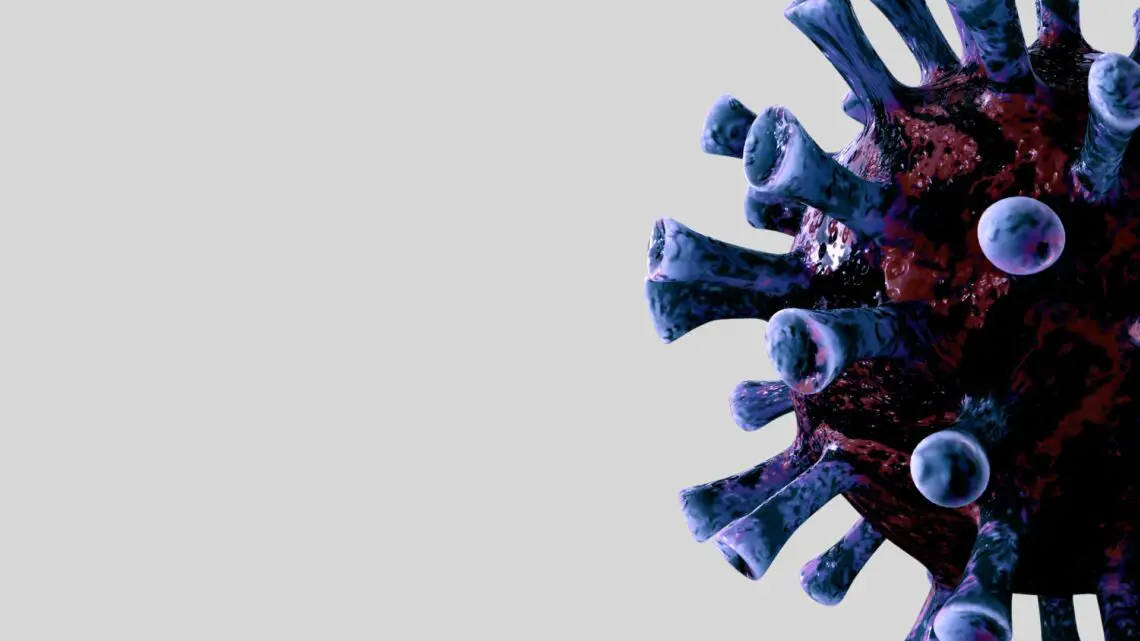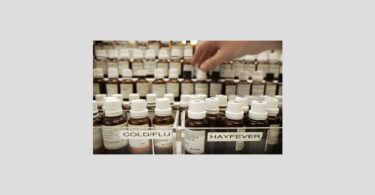The Fruitcake Science Used Against Homeopathy
The campaign against homeopathy began in about 2005. It needed a scientific foundation and this was provided by Shang et al. in a study called “Are the clinical effects of homoeopathy placebo effects?” (Lancet 2005;366 (9487):726-733)
But that meta-analysis of trials of homeopathy is an atrocious piece of science which has been thoroughly discredited, except in the media. Despite the plausible impression it gives, it is the original bad apple which infected the whole barrel of skeptical opinion.
The authors introduce their work by making three points;
- Homeopathy seems implausible “in the light of current knowledge”.
- So how can the positive results for homeopathy be explained? The authors suggest bias in scientific trials.
- To test for this bias, they matched trials of homeopathy with trials of orthodox medicine and compared the results.
All these three statements have serious problems. The first sentence is incorrect; current scientific understanding of water shows that it is does have properties homeopathy needs it to have, so homeopathy is in fact scientifically plausible.
This was true of the scientific understanding of water even in 2005 and since then water science has been moving ever closer to homeopathy. The authors are scraping the barrel and simply repeating anti-homeopathy opinion, not science.
The second sentence says bias in the trials could explain the good results for homeopathy. Yes, it could – or it could be that the trials are pretty peachy and homeopathy does have positive effects beyond placebo. This possibility has not been considered. This assumption that bias explains homeopathy’s good results recurs throughout the research.
Concerning the last sentence: nowhere in the study is it explained why this matching was done. Since comparing pairs of studies is an unusual approach, the failure to justify it in this case is a cause for concern.
Already this seems like a prejudiced and non-transparent study.
But this is only the beginning of its problems. There are more specific fundamental scientific flaws in the study, as described by several experts who have analysed the methodology.
Firstly, the study compares apples with oranges – it compares the incomparable – trials of orthodox medicine with trials of homeopathy, which are necessarily different in design. And, predictably enough, it discovers that, when it comes to making orange juice, oranges are better. In other words, it sets up the study to get better results for allopathy.
Scientists who have assessed this study mention many other problems with comparing homeopathic and allopathic trials – including comparing holistic and local treatments and comparing individualised and disease-diagnosis prescribing.
But, even worse, the authors do not stick to their plan anyway. “[T]he original stated intention to compare trials of similar condition and outcome has been ignored.” (3). This is a scientific outrage.
Secondly, there is the question of how trials used in the study were selected. One technique used is comparing better quality homeopathy trials and lower quality orthodox medicine trials, while knowing that better trials get smaller results.
But the authors of the study used other ways of selecting trials which guarantee that homeopathy will come out badly. A leading Swedish medical researcher said: “To conclude that homeopathy lacks clinical effect, more than 90% of the available clinical trials had to be disregarded..” (Hahn RG. Homeopathy: Meta-Analyses of Pooled Clinical Data. Forsch Komplementmed 2013;20:376–381.)
The method of selecting evidence ensures that most of the evidence is ignored. The authors select the trials that get the worst result for homeopathy. If a different selection was made the results for homeopathy would be better.
To use yet another fruit analogy, this is cherry-picking. Only 8 out of the 110 trials originally selected were actually used. And if just one of those 8 trials is changed, the results would show that homeopathy clearly works beyond placebo. This also looks like a choice made deliberately to misrepresent homeopathy.
The Homeopathy Research Institute (HRI) highlights something else: “The conclusions of this study were based on only 8 of the 110 trials, none of which tested usual homeopathic care.” There is no good reason to test unusual ways of treating people with homeopathy, unless you want to get negative results.
And none of these choices the authors made are explained. “One of the most serious criticisms is the complete lack of transparency: we have no idea which eight trials were included in the final, damning, analysis. Prof. Egger has refused several requests to disclose the identity of the eight trials.” (2.) Why would he do that unless he has something to hide?
Thirdly, the study comes to the underwhelming and ambiguous conclusion that the result “is compatible with the notion that the clinical effects of homoeopathy are placebo effects”.
Compatibility with a notion is hardly convincing! Logically, the stated result must also be compatible with the notion that the clinical effects of homeopathy are not placebo effects, yet this is never mentioned.
Their invalid conclusion is inflated and distorted by the editor of the Lancet into “the end of homeopathy”. There is no justification for saying that. The massaging of the facts, which starts even before the study begins, continues even after it is completed.
This study has been promoted as a negative result for homeopathy when in fact it is nothing of the kind. Even with its bias, it can only achieve an inconclusive result. That is a measure of its real achievement – nothing much. It seems that the authors don’t give a fig for logic.
Finally there is this: “But perhaps the most telling single criticism of this meta-analysis is that it fails, on multiple counts, to meet the generally accepted standards for meta-analysis—the QUOROM statement (Quality of Reports of Meta-Analyses of Randomised Controlled Trials), published in The Lancet itself in 1999.” (3)
This study is so flawed it does not even meet generally accepted scientific standards! It really has gone bananas! Chatfield and Relton summarise all this as follows:
“The fact that these issues have not been fully explored by the authors or publishers could suggest either a lack of understanding of research in homeopathy or a deliberate attempt to mislead.”
It looks as if many subtle methods have been used in this study in order to achieve its bad results for homeopathy. “This demonstrates that the findings of this paper are completely unreliable.” (1)
So much for the scientific rigour and reputation of Shang et al. – it has little of either. Yet it features strongly in subsequent scientific and political attacks on homeopathy. It is used, for example, in Trick Or Treatment, a book by Edzard Ernst and Simon Singh. (In my book Homeopathy: Good Science I describe the sequence of non-sequitors used in their justification of the Shang study.)
At the end of their account, Ernst and Singh add some extra distortion:
“Crucially, Shang’s analysis confirms the results of about a dozen other meta-analyses and systematic reviews published over the last decade, all of which fail to show that homeopathy offers any benefit beyond placebo.” (P.137)
In fact, out of seven systematic reviews only one was negative [except it wasn’t really, it was inconclusive], and that was Shang’s!
Careful examination of this study reveals that the campaign against homeopathy is based on nothing – nothing scientific at all. It cannot be a coincidence that this, a discredited unscientific study, the only negative meta-analysis of homeopathy, appeared as the attacks on homeopathy began. The whole thing looks like a coordinated attack. This is a sensible logical conclusion, not sour grapes.
This study, which is a travesty of science, has had too much impact. Its bogus science survived scrutiny long enough to start the campaign against homeopathy. This study has been quoted repeatedly, in defiance of logic and science, by detractors of homeopathy. It is accepted uncritically by the medias that incorrect statements such as “there is no evidence that homeopathy is more effective than placebo” are everywhere.
It is broadcast widely to change the narrative on homeopathy and shift public opinion. It is used by governments and policy-makers to justify measures taken against homeopathy.
Suppression of homeopathy is built on Shang et al. It is employed against us by our critics. But they have all been sold a lemon. Such pseudoscience has no authority whatsoever and should have been demolished scientifically and discredited publicly before it had a chance to turn the debate pear-shaped.
This all shows that for homeopaths, life in the twenty-first century is not a bowl of cherries. However we can have faith in real science. The real science is not forbidden fruit for us and it can help us to advance our cause. The real science is on our side, and there are many tasty bits ready to be picked. It is pseudoscience that has upset the apple cart.
We are now taking another bite at the cherry and fighting back against this study and similar attacks, organising ourselves and establishing what science really says about homeopathy. The truth is that scientifically speaking, homeopathy is top banana.
Up-to-date science says that homeopathy is scientific. Any innovative progressive water researcher could see homeopathy as the apple of their eye. Eventually science always catches up with reality – that is its mission – and puts everything in apple-pie order. Then, as homeopaths, we will be able to enjoy the fruits of our scientific labours.
Note: ”Criticism of scientific research is usually polite and understated, but this study has gone further and become distinctly fruity.
Scources:
(1) Homeopathy Research Institute.
(2) Dr Peter Fisher on the HRI site.
(3) Kate Chatfield and Clare Relton (“A full critique of the article by Shang et al.” (https://bchomeopathy.ca/articles/clinical-effects-placebo/)
Disclaimer: No fruit has been harmed in the preparation of this article.






Please, change the words “Scientific Attacks” for (Pseudo)”Skeptic attacks”.
One more very important point against these meta-analyses is that, homeopathic effects and cures do occur in the blind spots of conventionally designed RTCs.
That is, the patients tend to under-report subjective cures on the one hand. Objective tests on the other hand heavily depend on clinical correlation which again relies on patient feedback. Thus if a marginally higher blood sugar doesn’t go down after a homeopathic similimum, but only improves one of the complications like peripheral neuropathy, Scientific community doesn’t accept the fact that the objective of controlling blood sugar itself is not the end but curing the complications are the real target. under-reporting ( inherent to homeopathy due to a peculiar reason) would make matters worse. The enumerators would deny improvement.
Say no to such invalid RCTs
Homeo cures accompany what we can scientifically call as “parity inversions”; there would be a flip in the modality, aggravation from motion would become aggravation from rest & visa versa. A morning head ache would become an evening one. Desire for cold drinks would become aversion to the same etc…
That is a parity inversion. The real cures gradually follow such initial effects.
Which RCT has verified these parity inversions ?
If done, wouldn’t the enumerators dig out the other improvements from the reluctant volunteers and conclude the true outcomes ? But this task becomes almost impossible if the enumerators are blinded. That is why Higher the quality of an invalid technique, more unreliable are the results.